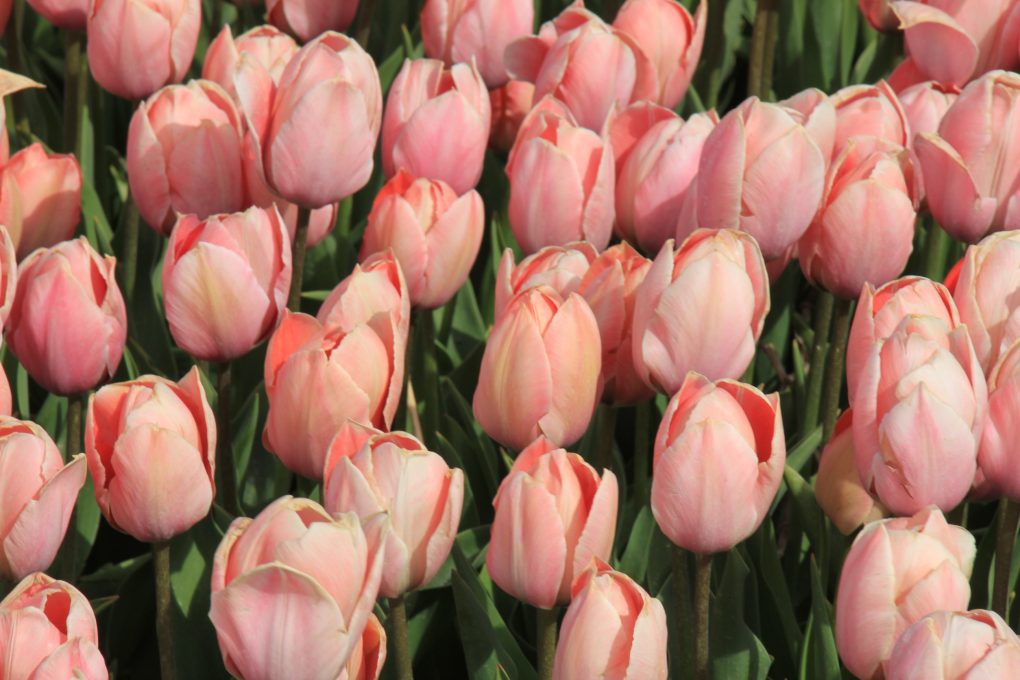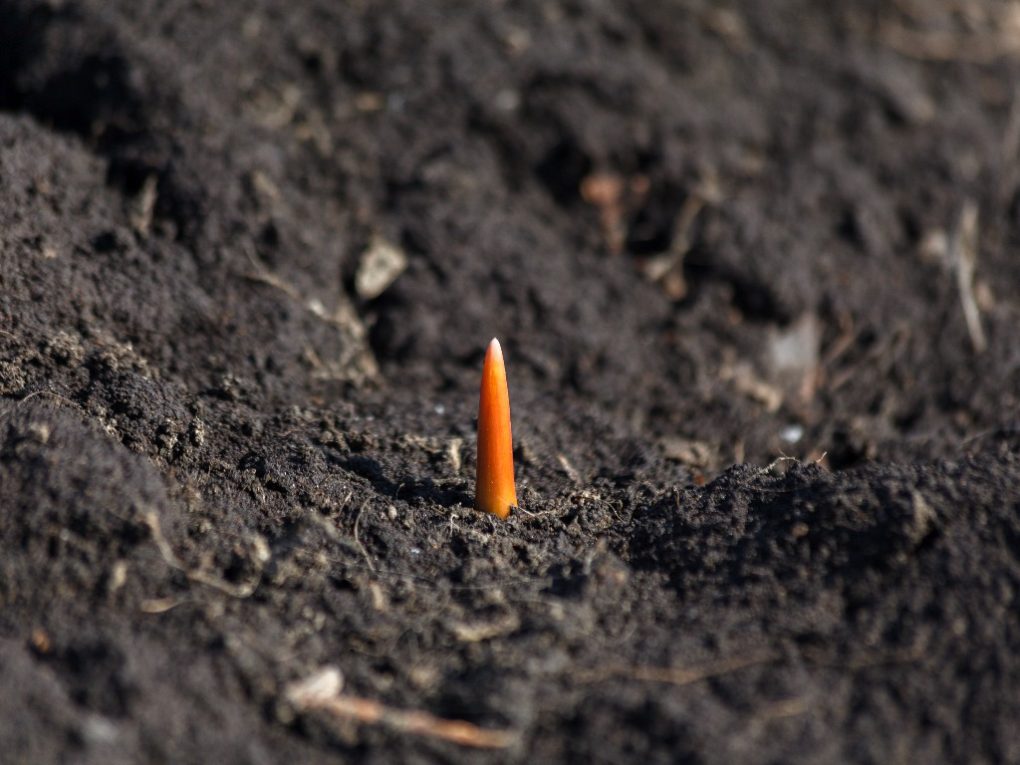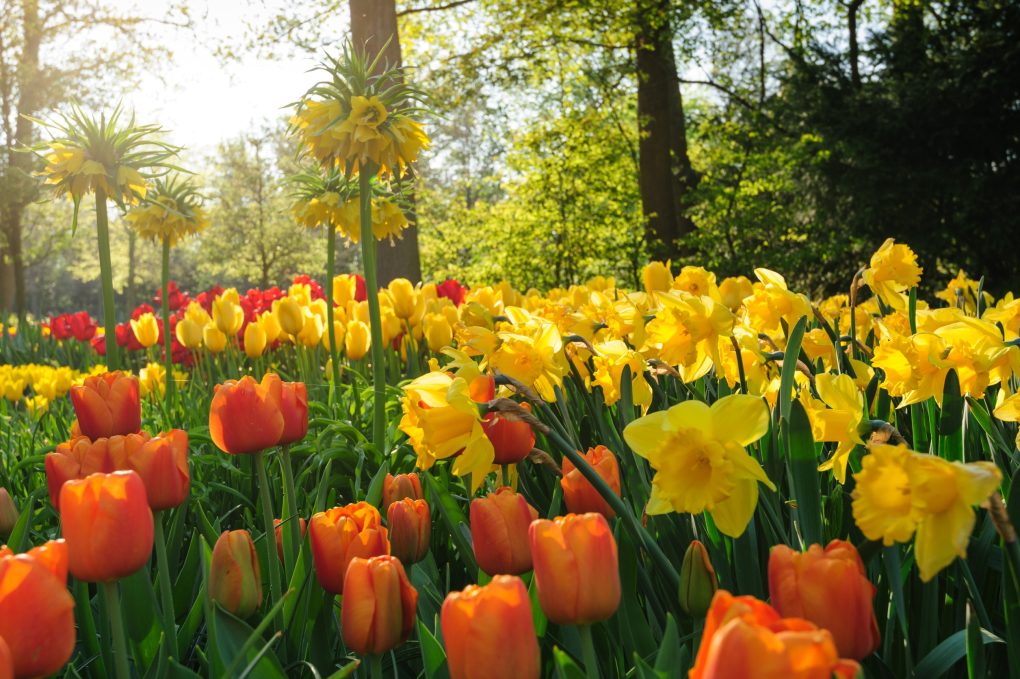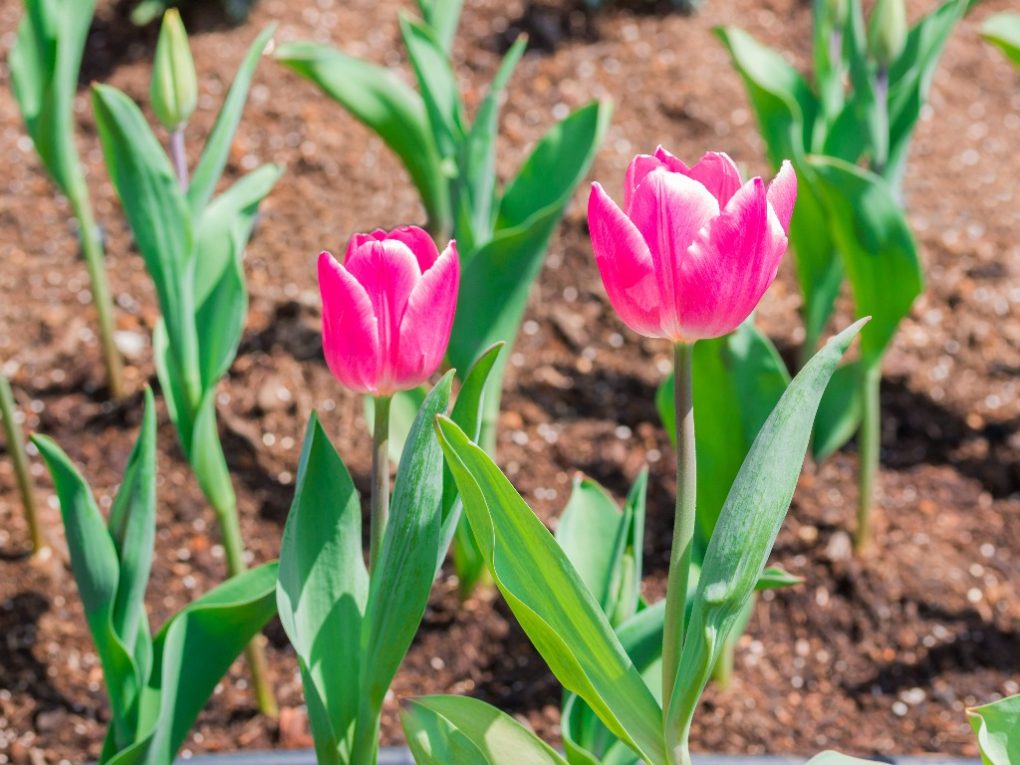Do Tulip Bulbs Need Fertilizer: What You Need to Know About Fertilizing Tulip
Yes, tulip bulbs require fertilizer for optimal growth. Fertilizer provides essential nutrients that the plant needs to grow and develop properly. The three main nutrients that tulip bulbs need are nitrogen, phosphorus, and potassium, often abbreviated as NPK on fertilizer labels.

Tulip bulbs are popular for gardeners looking to add color to their outdoor space. While tulips are relatively easy to grow, providing them with the right nutrients is important to ensure they thrive.
Before planting tulip bulbs, adding a slow-release fertilizer to the soil is recommended to provide a steady supply of nutrients over time. This can be done by mixing a balanced fertilizer, such as a 10-10-10 or 12-12-12 formula, into the soil at the bottom of the planting hole.
Fertilizer provides the necessary nutrients for tulips to grow strong roots and produce vibrant blooms. However, it is important to use the right type of fertilizer and to apply it at the right time to avoid damaging the bulbs or causing them to produce weak or stunted growth.
Table of Contents
Reasons Why Tulip Bulbs Need Fertilizer
Nutrient Deficiencies
Nutrient deficiencies can significantly impact the growth and development of tulip bulbs. Nitrogen is essential for plant growth and development, and a lack of nitrogen can result in stunted growth, yellowing of the leaves, and reduced flower production. Phosphorus is important for root growth and flower development. However, a lack of phosphorus can result in weak and stunted plants with reduced flower size and production.
Potassium helps regulate water balance and is important for overall plant health. A lack of potassium can result in weak stems, yellowing of the leaves, and reduced flower production.
Calcium is important for cell wall development and overall plant structure. A lack of calcium can result in distorted growth and reduced flower production. Magnesium is important for chlorophyll production and photosynthesis, but a lack of magnesium can result in the yellowing of the leaves and reduced flower production.
Soil Quality
Soil quality is an important factor that can affect the growth and development of tulip bulbs. Tulips grow best in slightly acidic to neutral soil with a pH of 6.0 to 7.0. If the soil pH is too low or too high, the plants may not be able to absorb nutrients properly, which can lead to nutrient deficiencies.

Tulips prefer well-draining soil with a light to medium texture. If the soil is too heavy or compacted, it can inhibit root growth and lead to poor bulb development. Providing organic matter, such as compost or well-rotted manure, can improve soil structure and fertility and promote healthy plant growth.
As mentioned earlier, tulips require certain nutrients to grow and develop properly. The availability of these nutrients in the soil can be affected by factors such as soil pH, soil texture, and organic matter content. Tulips require well-draining soil that is moist but not soggy. If the soil is too wet, it can lead to root rot and other problems.
Bulb Development
Bulb development in tulips occurs in stages and is influenced by various factors such as temperature, light, and moisture. Tulip bulbs are formed during the growing season when the plant actively photosynthesizes and stores energy in the bulb. The plant produces new roots to support the developing bulb during this stage.
The bulb matures in late summer or early fall, accumulating energy and nutrients. The plant leaves will begin to yellow and die back, signaling that the bulb is preparing for dormancy.
During winter, tulip bulbs enter a dormancy where they are inactive and protected from harsh weather conditions. This stage is crucial for bulb development, as it allows the plant to store energy and prepare for growth in the spring.
As temperatures warm up in the spring, tulip bulbs will begin to grow and produce new shoots. Once the shoots emerge from the soil, they will continue to thrive and develop until they produce a flower.
Flower Production
Temperature, light, moisture, and nutrient availability influence flower production in tulips. Tulips require a period of cold temperatures to initiate flower production. This is why they are typically planted in the fall, allowing them to go through a period of dormancy during the winter months before emerging and flowering in the spring.
Tulips require a significant amount of sunlight to produce flowers. They should be planted in an area that receives at least 6 hours of direct sunlight daily. They require adequate moisture to produce healthy flowers. They should be watered regularly, especially during dry periods.

Tulips require a range of nutrients to produce healthy flowers, including nitrogen, phosphorus, and potassium. Providing the bulbs with a balanced fertilizer can help ensure that they have access to the nutrients they need for strong growth and flower production.
Diseases and pests can damage tulip bulbs and reduce flower production. Therefore, it is important to monitor plants regularly for signs of disease or pest infestation and take steps to address any issues as soon as possible.
Types of Tulip Bulb Fertilizers
Organic Fertilizers
Organic fertilizers for tulip bulbs are environmentally friendly and made from natural sources. They are slow-release fertilizers that break down over time, providing nutrients to the tulip bulbs. Some examples of organic fertilizers are:
- Bone meal: This is a good source of phosphorus, which promotes root growth and flower development, according to Trees.com.
- Compost: This good nitrogen source promotes leaf growth and overall plant health.
- Manure: This is a good source of potassium, which helps the tulip bulbs resist disease and stress.
Inorganic Fertilizers for Tulip Bulbs
Inorganic fertilizers for tulip bulbs are made from synthetic sources and are fast-release fertilizers. They immediately provide nutrients to the tulip bulbs but can harm the environment if used improperly. Some examples of inorganic fertilizers are:
Fertilizer
Nutrient Ratio
Benefits
10-10-10
10% nitrogen, 10% phosphorus, 10% potassium
Provides balanced nutrients for overall plant health and growth.
5-10-5
5% nitrogen, 10% phosphorus, 5% potassium
Provides high levels of phosphorus for flower development.
15-30-15
15% nitrogen, 30% phosphorus, 15% potassium
Provides high levels of phosphorus for flower development and high nitrogen levels for leaf growth.

Tips to Fertilize Tulip Bulbs
- Timing: Fertilize tulip bulbs in the fall, after planting, and before the ground freezes. This allows the fertilizer to be absorbed by the bulbs as they develop roots and begin preparing for the following spring’s growth.
- Type of fertilizer: Use a balanced fertilizer, such as a 10-10-10 or 14-14-14, that provides equal amounts of nitrogen, phosphorus, and potassium. Avoid using fertilizers high in nitrogen, as this can lead to excessive leaf growth at the expense of flower production.
- Application rate: Apply fertilizer at approximately 1 pound per 100 square feet of soil or according to the manufacturer’s instructions. Be careful not to over-fertilize, as this can lead to the burning of the roots and bulbs.
- Method of application: Apply the fertilizer evenly over the soil surface, avoiding direct contact with the bulbs. One hack I’ve learned is you can mix the fertilizer into the soil before planting.
- Watering: After fertilizing, water the bulbs thoroughly to help distribute the nutrients and encourage absorption by the roots.
